Google Is Shifting to a Mobile-First Index: What Marketers Need to Know to Prepare

We’re living in a mobile-first world. For most of us, that means from the moment you wake up in the morning, your phone becomes a part of your daily routine — from silencing your alarm, to reviewing the daily news, to checking email, and so on.
And search engines are seeing the result of this trend: search queries on mobile have now surpassed desktop-based queries.
Now you may be thinking, my website is already mobile-friendly … so I’m set, right?
Sure, you are ready for mobile visitors, but your content may not be optimized for the new realities of search. What exactly do we mean by that? 
Well, Google recently announced that its search results index is essentially being flipped and will prioritize mobile results first:
This is big, so send us your questions so we know what’s not clear & what we need to communicate more about
https://t.co/i4krA3cgqN
— Gary Illyes (@methode)
November 5, 2016
With Google currently experimenting with this change, there’s a lot you need to know to ensure you’re prepared. But don’t panic, we’ll walk through it all below.
What Is Mobile-First Indexing?
As Google’s Gary Illyes said, this is a big change, so let’s start by discussing some of the details first. Keep in mind this update is currently in testing so you may not notice any differences at the moment.
Mobile-friendly websites matter, regardless of technology. Google has previously stated their preferred method of a mobile-friendly website was responsive design. For this change to mobile-first indexing, Illyes stated that specific mobile site versions and responsive design will work.
SERPs will now be primarily based on mobile content. Today, if you have a page that shows some specific content to desktop-based visitors, but excludes content for mobile visitors, you may notice a change in results because of the mobile-specific content. Because results will start to primarily use mobile content first, you should consider what, and how much content, to add to your mobile version.
AMP-enabled pages are treated as mobile content. If you have Accelerated Mobile Pages (AMP) for your website, or blog, these pages will be treated as other mobile pages and will be indexed first.
Again, this update is still being tested and is likely still “months away” so many details are still emerging and being worked out. In the meantime, it’s worth starting to prepare for mobile-first indexing.
What About #Mobilegeddon?
One of the primary premises behind the mobile algorithm update, affectionately referred to as Mobilegeddon, was that Google was beginning to establish a separate mobile-index for results.
While it seems that Google may continue to build a separate mobile index, the key part here is that they will flip the indexing from desktop-first to mobile-first.
See the below conversation with Illyes for more:
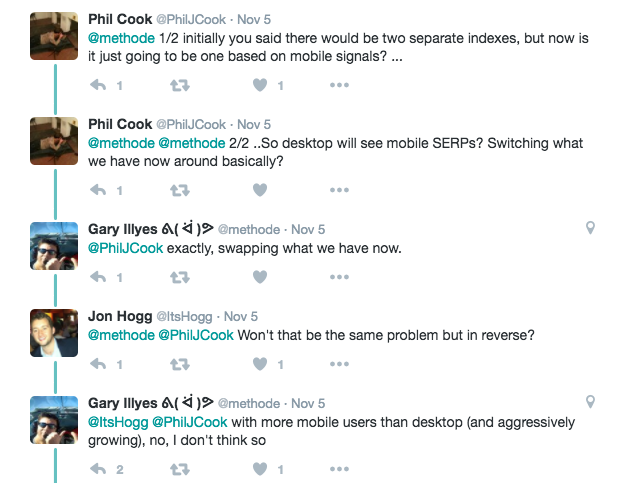
How You Can Prepare For the Mobile-First World
1) Ensure you have a mobile-friendly website.
Google’s preferred technology utilizes responsive design so your website adapts to the screen-size of the visitor, but if you have a dedicated mobile website (m.example.com) that is fine, too.
HubSpot Customers: Any of your content created using the HubSpot software will utilize responsive design and, as a result, you should be prepared for mobile-first content indexing.
2) Consider if content should be adjusted for mobile.
Most content created specifically for mobile is naturally shorter. You should ensure that your page is still seen as the authoritative source on the content topic you’re writing about, but that doesn’t necessarily mean it has to be long-form content.
Don’t be afraid to consider other types of content — like video and audio — that you can integrate into your strategy. These additional content types can be better for the user experience, and a transcript can be included on the page to ensure the maximum impact for SEO.
Any content you have on pages that is incompatible with mobile devices — i.e., Flash videos — should be replaced as soon as possible.
If you do not have a mobile-friendly website, Google will still index your website but the mobile crawler may appear in your Search Console. Not sure if your website is mobile-friendly? Get your website graded to find out.
3) Prioritize the factors that are important in this new mobile-first index.
What are those factors? Here are two you’ll want to keep a close eye on:
Site speed has always been important, but now with a mobile-first index, it’s become even more crucial. This also means you need to be aware of the weight of content on a page, which can drastically affect page speed and has a cascading effect on user experience. More on that here.
User experience and engagement have become increasingly important signals for search engines. If a visitor comes to your page and leaves within a few seconds, it’s an indication they didn’t quite find what they were looking for. On the opposite end of the spectrum, if the visitor stays on your page and engages with various links and resources, they are likely highly engaged. In a mobile-first world, consider the experience of that one page, but also how users travel between pages and their experience between each step.
Again, these updates are still actively being discussed, but in the meantime, get involved in the discussion and ensure your website is mobile-friendly.
What questions do you have about the mobile-first shift? Share them in the comments below.
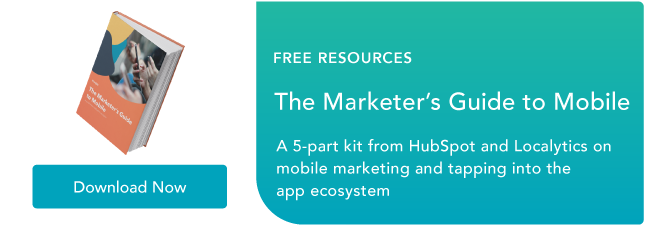
![]()
SearchCap: Google offensive, local SEO & small business
Below is what happened in search today, as reported on Search Engine Land and from other places across the web.
The post SearchCap: Google offensive, local SEO & small business appeared first on Search Engine Land.
25 E-Commerce Experts Share Their Best Tips for Driving Repeat Sales Online
Whether you’ve been running an online store for 6 months or 6+ years, it’s a never-ending battle to win conversions. With average cart abandonment rates hovering around 68% – a mix of new and returning customers – you want to do everything you can to both acquire new customers and get them spend more money and convert when they return.
Here are some great tips from some of the sharpest minds in the marketing and ecommerce industries to help you drive more repeat business in your online store.
1. Develop a Loyalty Program
“Reward customers for their loyalty. Developing a loyalty membership to your store is another way to increase conversions from your current customers while rewarding them for their repeat purchases.
Creating a loyalty program can be as simple as rewarding customers on their second purchase at your store or after a set dollar figure. Your store reports makes it easy to see who your best customers are by dollar value and total number of orders.” Richard Lazazzera – Better Lemonade Stand/Shopify
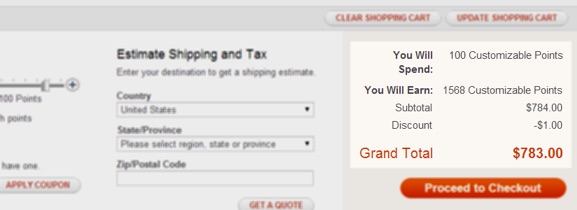 Reward programs can entice customers to return to your store more often and spend more.
Reward programs can entice customers to return to your store more often and spend more.
2. Focus on Building Consumer Trust
“Trust is the glue on a successful long-term relationship, whether it’s between romantic partners or a retailer and their customers, and it also happens to be the natural result of honesty and consistency.
Earning a consumer’s trust is the first step to creating a brand evangelist that will share their positive experiences with their friends and family. According to a recent study by Forbes, 81% of respondents indicated that their friends and family directly influence their purchase decisions. That’s an amazing asset to retailers who are able to win consumers’ trust.” Glori Blatt – GoGrit
3. Don’t Invest in Paid Ads Too Early
“Once you’ve got a steady, predictable stream of traffic coming in, you can begin focusing on improving user experience and conversions, and even more importantly, capturing emails to build and nurture an email list.
You may have heard lots of good things about Facebook ads, but I recommend not focusing on Facebook paid traffic at first. Facebook is great for driving traffic to generate leads, which you can turn into customers over time. But search engine paid traffic is generally further down the purchase intent funnel and will yield better results for ecommerce sites.” Ryan BeMiller – Shopping Signals
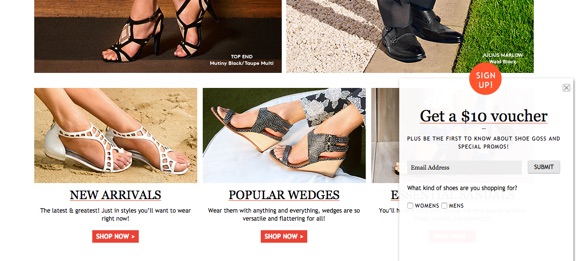 Collect customers’ emails and encourage them to come back for more with special email offers.
Collect customers’ emails and encourage them to come back for more with special email offers.
4. Answer All Questions on Every Platform
“Answer all questions and respond to comments quickly! Staying on top of your social media, emails, and site comments is one of the easiest ways to continue the relationship post-sale.” Rachel Daley – MadeFreshley
5. Over-Deliver in All You Do
“If you can [under-promise and over-deliver], your retention rate and net promoter score will go to the sky, you won’t need to brag and advertise and ‘build a brand’ by constantly interrupting your audience with ‘remarketing’ and ‘branding’ campaigns.” Valentin Radu – Marketizator
6. Get New Customers from Loyal Fans
“The best way to get more of these perfect customers is to make it easy and worth the effort for these customers to refer their friends.
Think about it: their immediate network is full of people just like them, and those are the people who will buy and buy again. There are lots of good products out there to help you manage a referral program. One of my favorites is RewardStream.
The bottom line: the best way to get repeat sales is to get more of the right customers, and the best way to get more of the right customers is to deliberately leverage the network of the customers you already have.” – Sujan Patel – SujanPatel.com
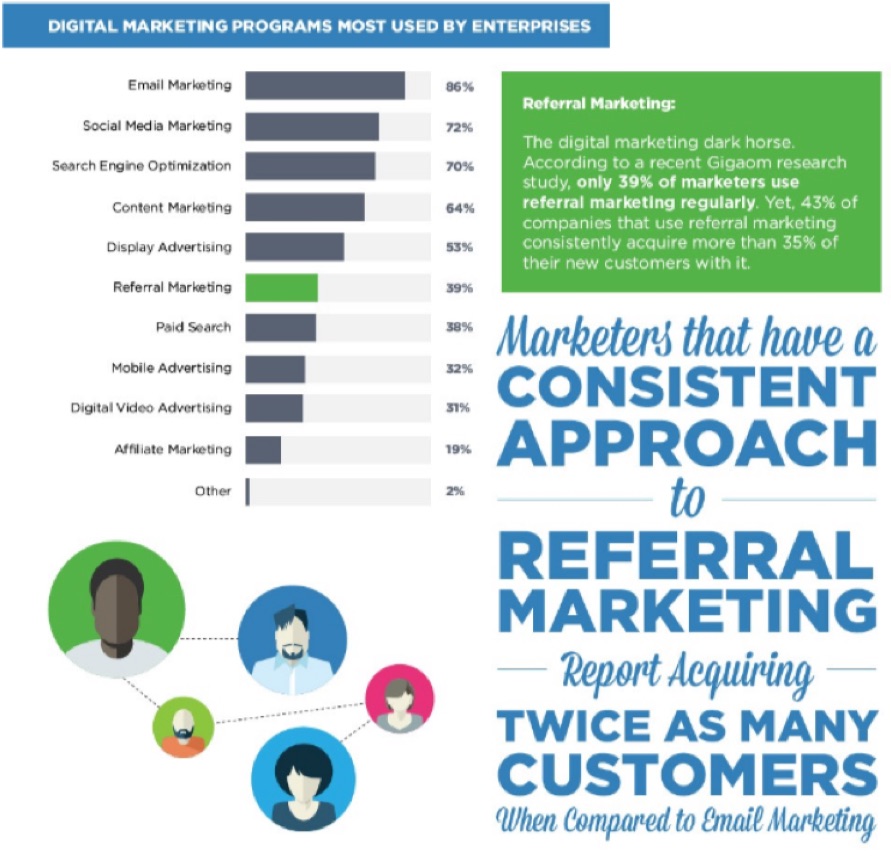 Referral marketing is an effective way to use repeat customers to generate new business.
Referral marketing is an effective way to use repeat customers to generate new business.
7. Share 10x Content
“Provide only the best content on your social channels. Don’t just write your own 10x content; understanding your customers makes it easier to curate content that will have a lot value and keep them engaged on social media. When you share really high-value stuff, with a diverse approach to content marketing in social, your audience will stay more engaged more often.
That elevated engagement keeps you visible in their feed so when it comes time for promotional posts, they’re more likely to see them, come back, and make a purchase.” Mohammad Harake – Stray Digital
8. Build a Model That Generates Return Sales
“[Successful e-commerce businesses] are able to convince existing and first-time customers to return on a fairly regular basis to make subsequent purchases. This is enabled by their business models (as in the case with subscription commerce), the depth of offering in their product catalogs, the products they sell are replenishables, they are able to execute sophisticated 1:1 personalized email marketing that nudges their customers to repurchase and their customer loyalty offers and rewards programs. Although subscription e-commerce businesses fall into this bracket by default, most etailers in the apparel vertical also by their very nature expect customers to return at least each season.” Kunle Campbell – 2x eCommerce
9. Sell the Experience, Not the Product
“Assume that no one really needs what you sell, because they probably don’t. In a little over 25 years, we’ve gone from an economy based on scarcity of goods and services to one that offers unimaginable abundance. There’s very little you can sell that can’t be gotten elsewhere. Focus instead on how you sell what you sell. Completely differentiate your customer experience and make sure it’s remarkable. Products come and go, but there will always be a market for truly remarkable experiences.” Doug Stephens – Retail Prophet
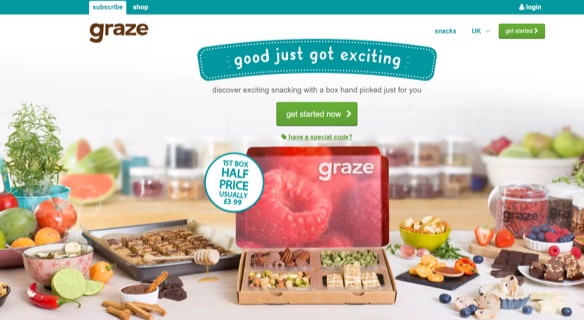 Develop creative ways to position your product, like this subscription box from Graze.
Develop creative ways to position your product, like this subscription box from Graze.
10. Delight with Rapid Fulfillment
“Retailers should never underestimate the ‘want it now’ mentality. If customers know that they will receive goods quickly when they order, they’ll keep coming back.” Graham Charlton – Clickz Global
11. Build a Great Brand
“Branding. As an e-commerce site, there won’t be much that sets you apart in the long run… everyone can offer free shipping or competitive prices. But the company that builds a strong brand is usually the one that will last. Look at Zappos and Amazon: they have done well over time due to their strong brand.” Neil Patel – NeilPatel.com
12. Simplify the Shopping Experience
“In order to drive repeat business, you have to make it easy and exciting for people to buy again. You can do this in a number of ways, such as providing an excellent mobile experience for people who visit your store, sending coupons and other offers in emails to past customers, sharing updates about new products on your social media pages and in your blog posts, and always thanking your customers for supporting your business.” William Harris – Sellbrite
 Firebox is a great example of simplified shopping, even on mobile, which makes it easy for customers to purchase again and again.
Firebox is a great example of simplified shopping, even on mobile, which makes it easy for customers to purchase again and again.
13. Remove Friction
“4 years of research and hundreds of split tests have taught me a lot about conversion optimization. One of the most important lessons is that friction kills conversion. The good news is that reducing friction is one of the most effective ways of increasing conversion…Friction has a negative impact on the decision-making process of your prospects and will tip the decision towards ‘No.’ The less friction the prospect encounters, the more likely he or she will be to accept your offer. So the more you can reduce friction, the more you’ll be able to tip the decision back towards ‘Yes.’” Michael Aagard – Content Verve
14. Offer a Rewards Program
“Credit card companies have been doing this for years, but now products are starting to see the benefits of offering a points system. Much like the rewards program at your favorite lunch spot that you keep going back to because you’re SO close to that free lunch, rewards programs are a great way to stay in touch with customers and build loyal fans.” Kala Linck – Duct Tape Marketing
15. Promote Your Product on Packaging
“There are plenty of other opportunities for people to see your packaging, including the following:
Sitting outside the door of someone’s house, apartment, or dorm room
Sitting on someone’s kitchen table, coffee table, or office desk
Pictured on their Facebook, Twitter, or Instagram newsfeed, likely because their friend has just received something they ordered or their pet is being adorable while playing with the box
Inside a UPS store, waiting to be picked up or shipped out
…The point is, packaging can be a great marketing tool, because it puts your business’s brand (and hopefully website link) in front of new and repeat customers. This opens the door to lots of new sales.” Kristi Hines – KristiHines.com
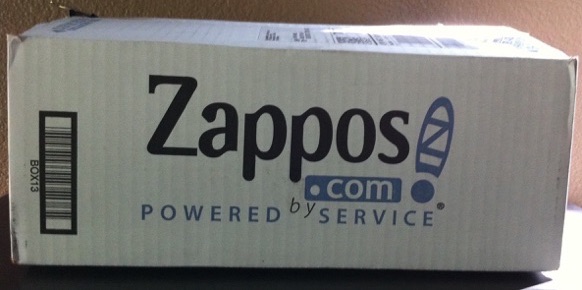 Invest in branded boxes with your URL on them, like Zappos did here, to increase exposure among new and repeat customers.
Invest in branded boxes with your URL on them, like Zappos did here, to increase exposure among new and repeat customers.
16. Create Memorable Experiences
“I’m a big fan of investing in high quality information to improve the shopping experience. That means videos, great photography, and engaging copy all in an easy to find format. If you can do those three things well, then you’ll stand out from the majority of retailers.” Eric Bandholz – Beardbrand
17. Use the Power of Remarking
“I discovered the power of [display remarketing] a few years ago, when I realized the vast majority of our site traffic came to us through non-branded organic searches, didn’t convert, and left and never came back. We were awesome at getting people to our site, but totally sucked at getting them to remember us after they got here…Just 18 months out, remarketing allowed us to increase our repeat visitors by 50%, boost conversion by 51%, and increase time on site by an insane 300%! Remarketing helped make our SEO 7x more awesome by keeping us in front of interested consumers and compelling them to take action.” Larry Kim – WordStream
18. Leverage User Generated Content
“Brands with strong user-generated content marketing campaigns will enjoy much more sustainable growth than their competitors. If you are able to engage customers and generate authentic content that is transparent, socially-integrated, personalized, data-driven and insightful, you will lead your businesses into success.” Tomer Tagrin – Yotpo
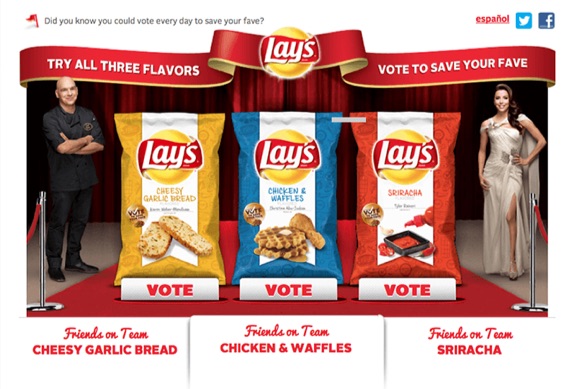 Use contests and events to promote user-generated content submissions, like Lay’s flavor contest.
Use contests and events to promote user-generated content submissions, like Lay’s flavor contest.
19. Let Data Drive Your Strategy
“Big Data lets you know how to most effectively engage with your customer and build a relationship over time as you learn what he or she likes and dislikes. Social media provides opportunities for web engagement through conversations in which an unlimited number of potential and actual customers can participate. Connecting with your customers via your Twitter feed or Facebook page allows them to tell you what they are thinking — and allows you to use that information to tweak your product offering or even expand your target market. It’s a chief marketing officer’s dream come true.”
“Each data point tells you something valuable about your customers’ purchasing habits. Leverage client engagement into a source for Big Data through social media interactions. Distributing a coupon or other offer through social media tells you far more than if your customers are clipping newspaper coupons.” Lisbeth Mcnabb – DigiworksCorp
20. Infuse Value in Everything You Do
“Today’s customers are smart and know when you’re trying to squeeze more out of their wallet. What it all comes down to is value. Helping your customer to get exactly what they want without compromise & feel good about it not only makes you more money, it makes them happier in the long run. That means offering personalized experiences, relevant recommendations, and products that truly are worth spending a little extra on.” Tommy Walker – Shopify
 Display recommendations on product pages to provide extra value and improve sales with repeat customers.
Display recommendations on product pages to provide extra value and improve sales with repeat customers.
21. Expand the Lifetime Value
“Many [marketers] don’t spend enough time obsessing over the customer lifetime value variables which give you growth leverage…I like to tell the story of a flower retailer I worked with who was frustrated that their crosstown competitor was outspending them on advertising and growing much faster than they were.
They were confused because they had the same prices — neither was undercutting the other — and they also had the same suppliers, so their COGS (cost of goods sold) were the same.
When I went and bought from their competitor, they did such a good job of asking why I was buying the flowers, for whom, what they liked, and if there were any other people or places in my life that liked flowers (such as my church, where people sometimes bring flowers but I never think to) that they were able to sell me flowers throughout the next several months at a much faster pace.” Sam Mallikarjunan – HubSpot Labs
22. Create Delightful Experiences
“Delight strikes a chord with our humanity. It’s memorable, emotional, and powerful in building long-term relationships with your customers that directly impact ROI.
The problem is, few brands get it right. They take shortcuts or neglect delightful experiences altogether. Here are the steps you need to take to cultivate a truly meaningful brand experience.
Delight is the most effective when connected to all touch points in your business strategy. The best places to integrate delight are: product, customer service, mission, and entertainment.” Victoria Young – Clarity
23. Create Urgency and Scarcity
“One of my favorite methods to drive e-commerce sales through email marketing is by using email to create urgency and scarcity for a specific product that needs a sales boost. Rather than sending a “sale” coupon and having a shop now button, I like to send out emails about a very specific product that is on sale for a limited time…
The promotion should be very specific and personal, and be segmented by the people who have either purchased this product in the past…or to people who signed up for your list but have not bought.” Jeff Sauer – Analytics Source
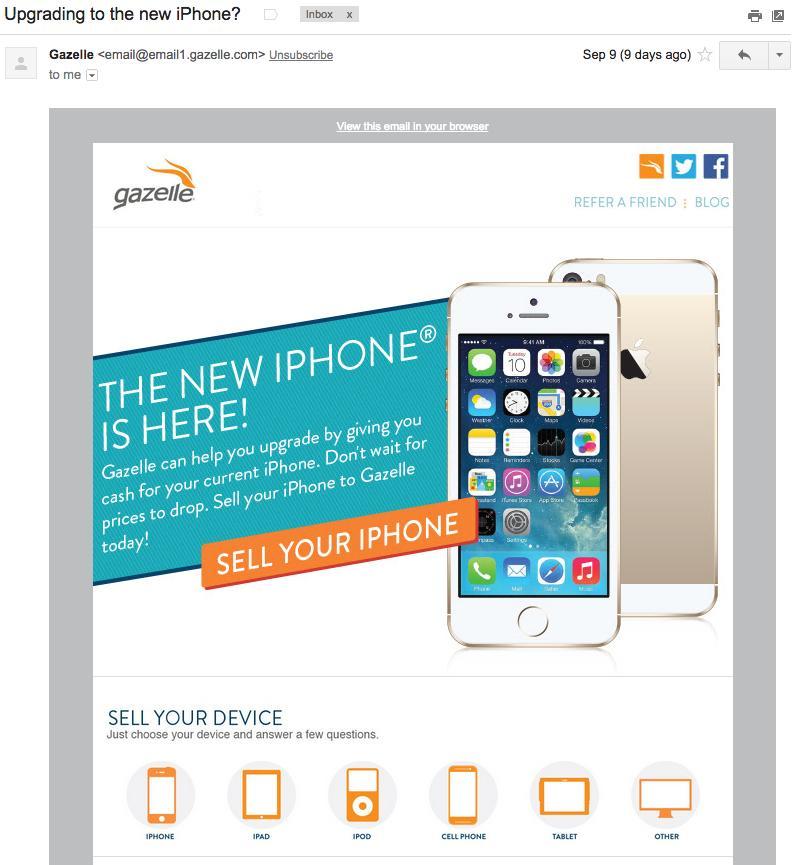 Send emails targeting specific list segments for a higher open rate and engagement.
Send emails targeting specific list segments for a higher open rate and engagement.
24. Show Genuine Gratitude Towards Your Customer
“Telling a repeat customer ‘thank you’ costs almost nothing. But it has a huge impact. Kissmetrics, the analytics firm, reported that as many as 3 out of 4 customers say they have spent more with a company because of a history of positive experiences. Kindness and gratitude for a customer’s business is an undeniable way to further enchant them for the long-term.
Try doing it often. In fact, make it a habit to send any shopper who makes more than two purchases a hand-signed thank you card. It will go a long way toward building long-term relationships.” Armondo Roggio – PracticaleCommerce
25. Offer Targeted Upsells and Promotions
“When past customers are writing a review, they’re actively thinking about the positive experience they had with your brand, making it the perfect time to offer another great experience.
But it’s not enough to just offer the upsell; you also have to be smart about it. Look at their past purchases, their behavior, how highly the products are rated and other data to determine the products that specific person is most likely to buy.
Data shows returning shoppers spend nearly three times more than one-time shoppers.
This accomplishes a few things. First, customers are more likely to write a review. Plus, you get the explosive publicity of them sharing it with their friends & family (who are likely also in your target market, and happy to hear a recommendation from a friend). Additionally, they become a repeat customer when they come back to your store to use the coupon (and write another review, etc).” Aimee Millwood – Yotpo
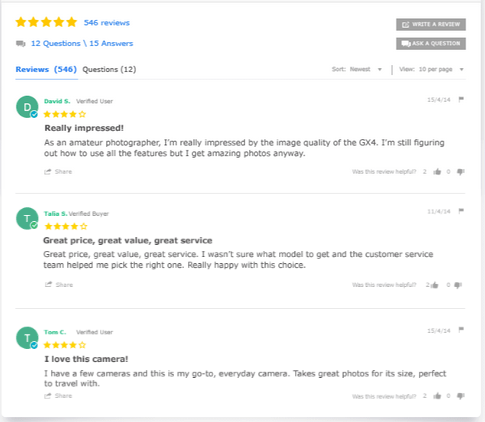 Customer reviews build trust and provide social proof, which lifts conversions even among returning customers.
Customer reviews build trust and provide social proof, which lifts conversions even among returning customers.
Bonus! Use Analytics to Guide Decision Making
Measure and optimize your marketing with Kissmetrics. See which campaigns are bringing the most loyal customers, which product lines bring the most revenue, and optimize your entire funnel with A/B tests. Learn more with this PDF.
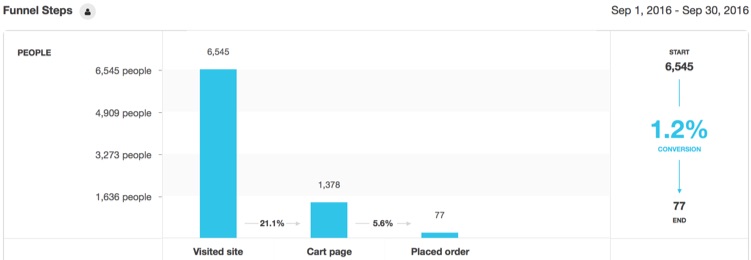
Conclusion
From consistent engagement via email and social media to leveraging user-generated content, there are countless ways to increase repeat sales with your customers. Keep these experts’ advice in mind and start reviewing your own metrics to uncover what has been most effective with your customers so far, and start building a retention program from there.
What’s been your most effective method for retaining customers and encouraging repeat business? Share your tips with me in the comments below.
About the Author: Aaron Agius is an experienced search, content and social marketer. He has worked with some of the world’s largest and most recognized brands to build their online presence. See more from Aaron at Louder Online, their Blog, Facebook, Twitter, Google+ and LinkedIn.
4 of the Biggest Advertising Trends of 2016

2016 was a year of unprecedented creative opportunities for advertisers.
Advancements in technology enabled agencies to develop campaigns across innovative new mediums, pushing the boundaries of digital advertising and inviting consumers to experience brands like never before.
Before we see what 2017 has in store, let’s take a look back at some of this year’s most impactful advertising trends. The following four marketing tactics left a big mark on 2016, and they show no signs of slowing down as we head into the new year.
See which trends fueled some of the most creative ad campaigns, and start planning your first 2017 campaign.
4 of the Biggest Advertising Trends of 2016
1) Experiential Marketing
From branded pop-up shops to larger promotional events, brands definitely embraced experiential marketing in 2016. And agencies rose to meet this growing demand.
Big brands like Coca-Cola, Google, and Anheuser-Busch sought out agency partners who specialize in creating brand experiences that woo participants and generate buzz on social media.
So what makes experiential marketing so powerful? Casey Conway, a founding partner of Say OK — the agency behind experiential work for brands like Google, Microsoft, and Converse — says it helps brands relate to people who don’t typically connect with traditional advertising mediums.
“We pride ourselves on getting those people who think they know better, who can see right through the traditional side [of advertising], and hit them in a cool, unique way,” Conway said to Adweek. “It’s not about a brand just being the logo [in an immersive experience]; it’s about giving the consumer an awesome experience from a brand.”
Example: SXSW ‘Suicide Squad’ Tattoo Shop Pop-Up
When Warner Brothers wanted a unique way to promote the Suicide Squad movie at SXSW, they turned to the experiential ad experts at Milwaukee-based GMR.
Their team temporarily converted a tattoo shop in downtown Austin into Harley Quinn’s Tattoo Parlor, offering free temporary and permanent tattoos inspired by the film’s characters to anyone who was interested. The shop was redesigned with decor from the movie and staffed with a team of Harley Quinn lookalikes to draw people in.
The event was a massive success for Warner Brothers, drawing in over 2,400 SXSW attendees and generating 35.4 million impressions on Twitter and Instagram.
2) Virtual Reality
Virtual and augmented reality have been rapidly gaining momentum for a few years, with investments in the space topping $1.1 billion in 2016. Skeptics have expressed concerns as to whether or not the tech is accessible enough to generate widespread and sustainable consumer interest, but this year advertisers began to realize that people are generally enthusiastic about exploring the new medium.
A survey conducted by Nielsen’s Media lab found that 24% of consumers said they will likely use or purchase VR next year, and another 20% said they would try it after learning some of the basics of the technology.
Companies like North Face, Samsung, and NBC all got in on the action, and smaller VR-focused marketing startups began cropping up to meet demand from major brands. In a signal of commitment to the medium, The New York Times even purchased Fake Love, a New York-based agency specializing in VR and AR campaigns.
“It’s completely immersive,” said Adam Harter, VP of marketing and cultural connections at Pepsi, speaking at a video conference. “We believe that if you can create an emotional connection with the consumer, you will hook them, you will make them fans of your brand. And I don’t think that any other experience other than VR can create an experience that people want to share more.”
Example: The National Park Service’s “Through the Ages” short film
To celebrate the National Park Service’s centennial anniversary, National Geographic partnered with Facebook’s Oculus Team and VR production agency Felix & Paul Studios to create a short film highlighting the natural beauty of Yosemite National Park.
Starring President Obama and his family, the 11-minute VR film offers viewers a uniquely immersive glimpse at the park as the first family explores the landscape. The video is available for Oculus Rift and on Facebook’s 360-degree video platform.
You can watch the 360-degree video version on the White House website.

Image Credit: The White House
3) Live Video
2016 was the year of live video for social platforms. Facebook launched Live back in April, Twitter introduced a mobile integration with live-streaming app Periscope, and Instagram just released a live video streaming service to all U.S. users in December.
Live video has become an inclusive extension of video marketing, allowing users to connect with content in real time. Brands have been taking full advantage of the new streaming capabilities, inviting consumers to experience live branded content directly from their devices.
And consumers are eager to tune in. Retail giant Lowe’s unveiled their Black Friday offers on Facebook Live to an audience of 32,000 (and picked up an additional 891,000 views via promoted posts over the following days). Martha Stewart broadcasts a series of popular live cooking videos, and Refinery29 hired a team of 10 staffers just to focus on creating Facebook Live content for the lifestyle website.
“Live content is uniquely compelling when it offers rarity,” said Topher Burns, group director of product innovation at Deep Focus, to Adweek. “Glimpses of life you’d never usually get, spaces you’d normally be denied access to, things that are happening in one moment that you’ve just got to see.”
Example: Taco Bell’s Friendsgiving Feast
To celebrate Thanksgiving this year, fast food chain Taco Bell held a “Friendsgiving” feast, inviting a group of social media influencers to their headquarters for a unusual spread of Thanksgiving-inspired taco creations.
They streamed the whole dinner live on Facebook, attracting an impressive audience of 150,000 taco-loving consumers throughout the broadcast.
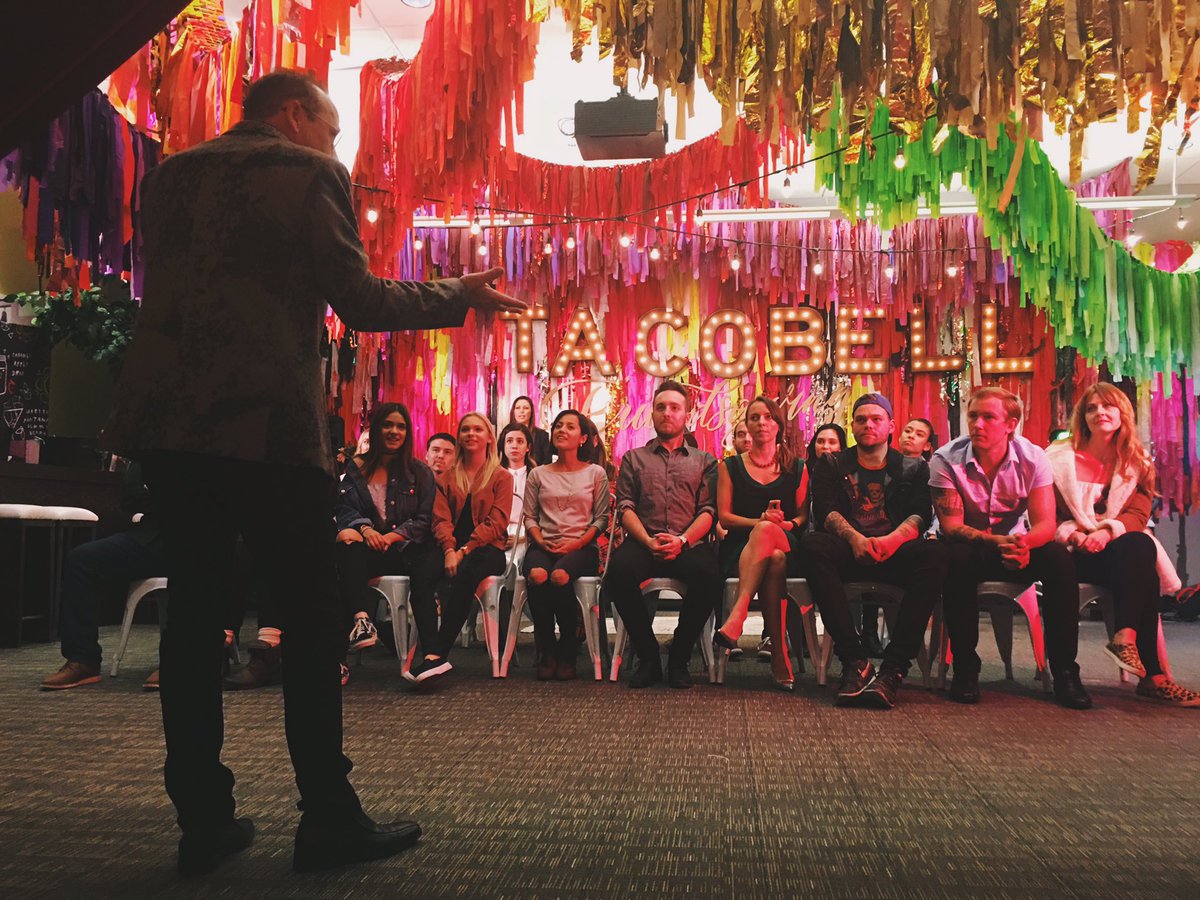 Image Credit:
Image Credit:
Taco Bell’s Twitter
4) Influencer Marketing
“Influencer marketing” became a much-circulated buzzword in 2016, but it’s still a largely uncertain investment for brands and agencies.
The concept of influencer marketing is pretty straightforward: to reach new audiences on social media, brands pay “influencers” — social media personalities and celebrities with massive follower counts — to post about their products. It’s become an extremely prevalent practice (particularly on YouTube and Instagram, where even pets are getting in on it), but there still aren’t clear compensation guidelines for influencers or ways for brands to measure the success of influencer-driven efforts.
And there’s been some legal backlash. TruthinAdvertising.org, a nonprofit devoted to fighting deceptive advertising, called out the Kardashian sisters in August for not being transparent about what brands they were being paid to promote on Instagram. As a result, many sponsored posts now include #ad or some variation to indicate that a post is a paid endorsement, but brands complain it reduces the efficacy of the posts.
Despite some of the issues with the practice, many brands have found success with tapping influencers to promote their products and target niche audiences. Lifestyle brands have been particularly successful reaching consumers through influencer campaigns.
Example: Honest Tea
Honest Tea, a beverage company, regularly partners with social media influencers to reach their target audience: young mothers. The brand has selectively recruited seven Instagram-famous moms to share challenging parenting moments with the hashtag #RefreshinglyHonest.
She isn’t even two but Evangeline has very particular tastes in food. Basically, anything sweet or salty and she’s all over it (sounds familiar…). Most days I try (beg) her to eat balanced meals, and other days I let her have her way. Today is one of those days. #OlivesForever Posted in partnership with @HonestTea-share some of your #RefreshinglyHonest moments so we can all feel better about our less than perfect parenting moments <3
What were your favorite advertising trends this year? Let us know in the comments.
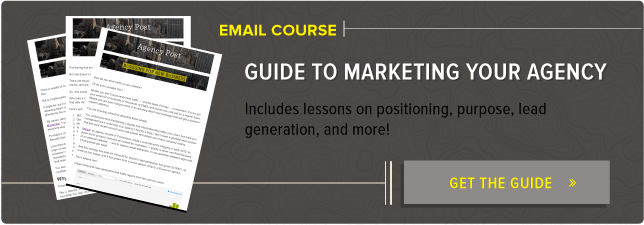
![]()
Do you have the martech knowledge you need?
Albert Einstein said “The only source of knowledge is experience.” Seems the martech challenges we face prove Einstein correct yet again. Matching practical experience with the right strategy, talent and organization makes the difference between leaders and stragglers in our software-powered marketing world. Where are you on that continuum? Take our quiz and find out […]
The post Do you have the martech knowledge you need? appeared first on Search Engine Land.
Celebrating women who are making an impact at Young Women’s Honors
What does it take to shift the conversation from “What if” to “I can”? When it comes to becoming a computer scientist, our research shows that girls need to see it to be it. Unfortunately, they’re about half as likely as boys to say that they often see someone like themselves doing computer science (CS) in the media. This is why we’ve teamed up with Young Women’s Honors — a global platform and the passion project of “Jane the Virgin” star Gina Rodriguez — which will host their first-ever award show tonight to honor and celebrate women who demonstrate confidence and leadership in their field.
When you see someone following their dreams, it gives you allowance to follow your own.
Gina Rodriguez
Actor

Of the 10 amazing women who will be celebrated tonight, Google’s Made With Code — along with YouTube star Lilly Singh and “Black-ish” star Yara Shahidi — will honor computer scientist Fereshteh Forough. After fleeing Afghanistan during the rise of the Taliban, Fereshteh followed her dreams of becoming a computer scientist. She then started Code to Inspire, a nonprofit that teaches female students in Afghanistan how to code, so that other girls from her hometown have a safe educational environment to develop their technical skills, build confidence, and challenge social norms.

Fereshteh’s Code to Inspire is part of the Google RISE program, which supports not-for-profit organizations around the world working to increase access to CS education. Last week, we announced another cohort of RISE that will join Code to Inspire and 200+ organizations the program has supported since 2010. This round includes organizations from 16 countries who will reach a combined 130,000 youth from backgrounds that are underrepresented in the field of computer science. In the coming year we’re excited to see what these organizations do — from girls in Argentina developing apps to solve social problems, young entrepreneurs in India building technical and leadership skills, and schools in Romania launching free coding clubs across the country.
Watch the show TONIGHT at 9/8c on YouTube and The CW to meet Fereshteh and more inspiring women like her!
Budget Planning, Hiring, Training & More: The Complete 2017 Marketing Strategy Kit [Free Download]

It’s almost the end of the year — which means marketing leaders everywhere are in the throes of getting organized for a fresh and successful new year.
You’re setting goals, managing your budget, reading up on how inbound marketing is changing, and figuring out which positions you can hire for. What’s more, you’re finding yourself creating a whole bunch of PowerPoint presentations to package this information nicely for your team, your managers, and other key stakeholders.
To help you stay organized and focused through all of your 2017 priorities, we’ve gathered together a complete collection of executive templates and guides in our latest kit: The 2017 Marketing Strategy Templates & Guides. It includes:
The 2016 State of Inbound Marketing & Sales Report
8 Budget Templates to Manage Your Marketing Spend
29 Job Descriptions for Hiring Excellent Marketers
Top Training Needs for Marketing Teams
How to Create Beautiful PowerPoints
Use the 2016 State of Inbound Marketing and Sales Report will help you communicate your goals with valuable insight from a diverse collection of global marketers. Then, try out our 8 Budget Templates to take control of all the moving pieces of your expenses on a monthly and quarterly level.
As you finalize the focus of the department, use our collection of 29 Job Descriptions for Hiring Excellent Marketers to identify what positions you might be missing, and then easily copy-and-paste these descriptions into your next job listings. Then, check out our Top Training Needs for Marketing Teams report, where we’ve compiled the questions marketers miss most from our Inbound Marketing Certification test and provided a refresher for the sections that proved most difficult.
And as you prepare your decks for the training sessions, use our beautiful PowerPoint templates to ensure your presentations are engaging and impactful.
Sounds too good to be true? It’s not. For access to all of these resources, download our 2017 Marketing Strategy Templates & Guides today.
Editor’s Note: This post was originally published in December 2016 and has been updated for freshness, accuracy, and comprehensiveness.
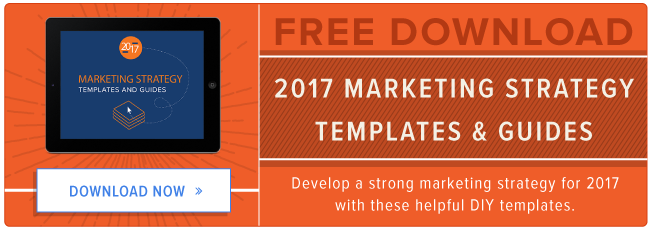
![]()
Snapchat Spectacles: A Simple Guide for Marketers

A great storyteller once said, “brevity is the soul of wit.” And although William Shakespeare wasn’t alive for the invention of video, we think he would agree with our marketing spin: “Brevity is the soul of video content.”
Video content has exploded on social media: Videos are watched by 82% of Twitter users, and 100 million hours of video are watched on Facebook every day.
But those platforms aren’t the only ones engaging users through video: Snapchat video views jumped to 10 billion per day, more than doubling in less than a year. And Snapchat users now watch nearly 800 hours of video content per second. 
In an effort to keep that growth moving forward, Snap Inc. (Snapchat’s parent company) unveiled Spectacles — sunglasses with a built-in video camera to easily record Snaps and transfer them seamlessly to the mobile app — in September 2016.
Looking for the inside scoop on this launch? You’re in luck, because I just got my hands on a pair of Spectacles to experiment with for this blog post. I’ll tell you everything you need to know about Spectacles and their potential for impact on social media and content marketing — featuring a few videos I recorded while taking them on a test run.
What Are Spectacles?
Spectacles are sunglasses with an integrated camera that records videos and syncs with the wearer’s Snapchat account via Bluetooth for easy capturing and sharing. Check out the video below of yours truly trying on the Spectacles for the first time (I was a little excited):
Users wear Spectacles like sunglasses and record video from their perspective in a new circular, interactive video format that lets viewers rotate their phones while viewing. As shown above, a white LED light will rotate to indicate that video is being recorded live. Check out the videos recorded using Spectacles below (and keep reading to see original footage I recorded using my Spectacles):
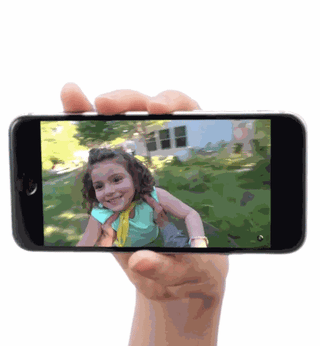
Source: Spectacles
Spectacles battery life allows for an average of 100 10-second video recordings per day, and the device can charge inside of its case several times to allow for wireless charging on-the-go. Spectacles come in black, teal, or coral and can be adjusted for fit or prescription lenses.
Wait, Isn’t This the Same Thing as Google Glass?
Spectacles might take you back to 2012, when Google announced Google Glass — a wearable, hands-free computer system. That project was halted in 2015, after Google faced barriers to widespread adoption, including privacy concerns and pop culture mockery.
Luckily, Snapchat Inc. seems to be following a different playbook when it comes to the positioning of Spectacles. Most notably, the product is dedicated solely to video capturing instead of functioning as a wearable computer system like Google Glass. As a result, the cost is significantly less: Spectacles can be purchased for just $129.99.
Sure, the specs are certainly a bit silly looking — the large lenses, bold frames, etc. — but, at the very least, they align with the brand’s colorful image.

At the end of the day, they’re far more wearable than Glass, which received plenty of less than positive feedback in terms of the design.
How to Get Spectacles
If you’re chomping at the bit to get your hands on a pair, we’ve got some bad news: Spectacles aren’t sold at a traditional storefront. Instead, they’re available in limited quantity for $129.99 at Snapbot vending machines that spontaneously pop up around the country. Yes, that’s right, a Snapbot.
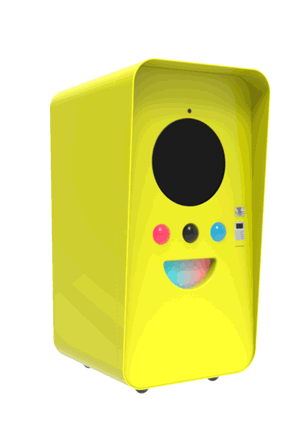
Source: Spectacles
Pretty interesting concept, right?
Now there’s a lot to be said about this unorthodox strategy, as Snap Inc. is disrupting both how video is recorded and how new technology brought to market.
Instead of shopping online or heading to a store, these Snapbots are being dropped without announcement or fanfare. Instead, buyers find out about Snapbot sightings via Twitter, Instagram, and word-of-mouth, then rush to queue in line in hopes that the Spectacles aren’t sold out by the time it’s their turn. Additionally, if you’re near a Snapbot, a Geofilter will appear in Snapchat letting you know:

Source: Spectacles
If you visit the “Find a Bot” page now, you’ll either see a map to the current location of the vending machine, or this image:

Source: Spectacles
The strategy behind this interesting distribution method? Aside from the obvious appeal to exclusivity, “It’s about us figuring out if it fits into people’s lives and seeing how they like it,” Snapchat’s CEO Evan Spiegel told the Wall Street Journal.
Spectacles are currently being resold for hundreds, and sometimes thousands of dollars on sites like eBay (admittedly, that’s where we snagged ours) and Amazon, leaving the rest of us to wonder whether or not this approach errs more on the side of frustrating or brilliant. But if there’s one thing we know, it’s that the buzz — both positive and negative — around this launch has inevitably created an interesting sounding board for ideas and iterations.
Why Are Spectacles Such a Big Deal?
Between the unusual launch and the unique video perspective, it’s easy to understand why Spectacles have the tech industry talking. But what does the introduction of a product like this mean for marketers? How might this launch shape the way brands approach their go-to-market strategies in the future? What impact will this have on the Snapchat app?
Let’s walk through some of the biggest takeaways here.
A New Way to Watch and Record Video
Have you ever had a moment that you wished you had captured on video, but you didn’t have the time to grab your phone, open your camera up, and delete enough photos to make room for storage?
Spectacles allow for (almost) hands-free video recording, granting wearers the freedom to record from their point of view. This adds a new level of ease for the “videographer” to live stream an event, go behind-the-scenes, record a how-to video, or even interview someone. It also creates a new, interesting experience for the viewer: Imagine watching a video from the eyes of your favorite brand or personality.
Here are a couple of Snaps I recorded hands-free using Spectacles:
The camera utilizes circular video, which plays full screen on any device, in any orientation. And the lens is designed to capture the human perspective, offering a 115 degree field of view. This opens Snapchat to a variety of new video content: Previously, users had to record Snaps in vertical format, and the display wouldn’t auto-adjust if videos were recorded horizontally.
Here’s a (very meta) video of me watching my Snapchat Story and experimenting with the circular video format — recorded using Spectacles, of course:
I had fun experimenting with the Spectacles for this article, and I’m excited to keep using them to record unique video content. I especially love the battery-charging case that keeps the Spectacles safe and ready to record at a moment’s notice.
A Unique Distribution Strategy
If you’re a social media marketer, take note: Snap Inc. does a great job of turning its product into a viral social media moment. The secrecy and exclusivity involved in the rollout make Snapchat users excited and curious — FOMO is real, people.
The larger lesson for marketers here? Use secrecy and exclusivity to generate buzz and make your audience more interested than ever in what you’re up to. For Snapchat Inc., that meant introducing wearable technology vending machines. For your company, that might mean serving up limited-time offers or creating an exclusive ambassador program.
A Platform-Specific Video Format
It’s still too early to analyze how Spectacles will perform, but broadly, Spectacles could impact social media and video marketing in few big ways.
Consumers want more video content, especially on social media. Spectacles answered that call by creating a new video recording format that can only be viewed on Snapchat. Spectacles are effectively helping create more video content on Snapchat while increasing their user base’s engagement with their mobile app. (In 2016, four-year-old Snapchat overtook ten-year-old Twitter’s user base with 150 million daily active users.)
From a brand perspective, this could make Snapchat a more desirable channel for advertising, as shoppers are nearly twice as likely to purchase a product if they’ve seen a video first. (Think: Showcasing your product through the lens of an authentic, human perspective.)
Additionally, if you’re an event marketer, this new video format offers an interesting avenue for showcasing what it’s like to actually be in attendance — something that regular video content or photos can’t capture.
What’s Next?
We can’t tell you much more about data on the Spectacles … yet. But we’ll be sure to keep you in the loop with more circular videos on our Snapchat Story.
And while you wait in line to get your pair, be sure to check out our other Snapchat content, like this hidden features piece, this guide to Snapchat Stories, and this roundup of brands nailing their Snapchat strategies.
What’s your favorite feature of Snapchat? Share with us in the comments below.
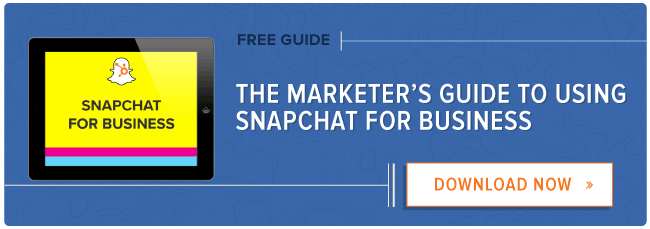
![]()
Beyond Email: How to Automatically Nurture Customers with Different Channels
Marketing automation = emails.
Right?
Well yes. But there’s so much more.
Which is fortunate, considering it’s never been more difficult to reach customers through email.
The competition’s higher. But email providers themselves are introducing new ways and methods to do everything in their power to limit the amount of promotional messages that reach a person’s inbox.
That’s great news for consumers. But terrible for marketers.
The good news, is that there’s a plethora of other available alternatives to combine with your marketing automation tactics.
Here are four to start using this week.
Is There Life After Email?
Marketing automation can deliver an unbelievable 451% new qualified leads and 34% increase in sales.
A big reason is because it successfully delivers the Holy Trinity of right message, right person, and right timing.
Despite the promising potential though, 85% aren’t happy with their execution.
And I’m willing to bet that part of it is due to our over-reliance (as marketers) on email.
Email is king. Was, king.
It used to generate $38 for every $1 spent. It still destroys Facebook and Twitter by 40X in acquiring new customers.
But today we’re becoming inundated by it.
Trillions of emails are being sent. It’s only a matter of time before you start receiving 140 on a daily basis!
The ‘graymail‘ we all send doesn’t help.
It’s being picked off today by powerful machine learning algorithms that instantly detect whether your message will hit someone’s inbox, end up in the Promotions graveyard, or be rejected altogether.
Today the hardest part isn’t sending email, but getting the damned things delivered in the first place.

Email’s still obviously powerful, but consumer behavior has evolved past just emails as well.
Multi-channel, multi-device shopping is now the norm. The customer journey isn’t a linear, one-off process.
That’s why it can take you over 13+ touches before someone purchases something.
So a single newsletter isn’t good enough. A single automated workflow of emails ain’t gonna cut it either.
Instead, we need to think beyond email and look for ways to incorporate other channels (and other tools or techniques) so that we can touch (in a strictly G-rated way) customers as much as possible, wherever they are.
Here are four.
1. Behavioral-Influenced Live Chat
Live chat is the top choice for consumer’s preference of support channels, with 79% preferring it over email and phone because of its immediacy.
It’s efficient, resolving most problems in only 42 seconds. And people like it because they don’t have to wait around on hold (or worse, try and get through an impenetrable phone tree).
But let’s be honest with each other for a second:
Live chat used to suck.
It was ‘static’ and dumb; giving you like-a-whole-IP’s-worth of knowledge about the person you were speaking too. Maybe a first name too (if it wasn’t fake).
The good news is that the times have evolved a bit.
With new options like Drift and Intercom, live chat (and the broader trend – messaging) has been transformed into a living, breathing communication channel that can power some pretty amazing stuff.
For example, Drift reports that their customers are able to start conversations with around 7-20% of their website visitors now.
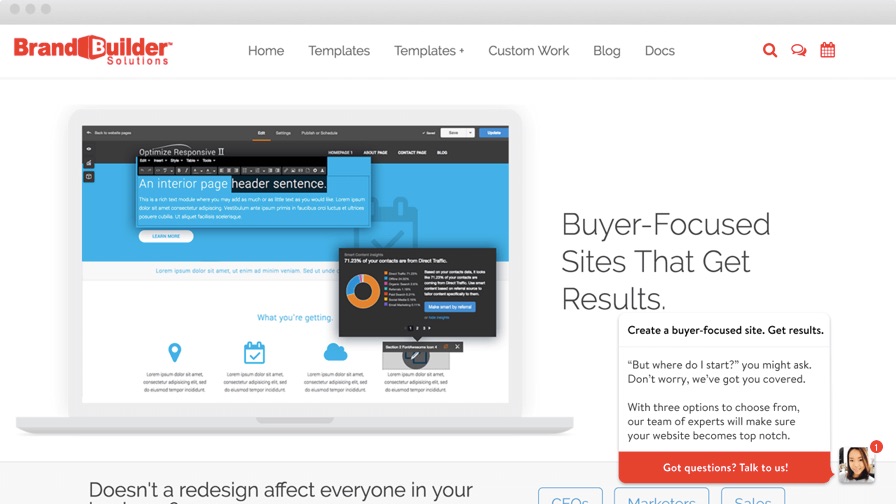
Today these systems are more like a blend between lead generation (getting visitor’s attention and interaction), marketing automation (reacting and responding differently depending on who’s viewing it), and customer service (answering basic sales or support questions).
New techniques like machine learning and artificial intelligence are being applied, allowing you to route or trigger messages to specific people based on key events.
That means you can tailor one message or conversation for a new visitor on your pricing page, differently than a long-term customer whose entire website and app visit history you can see. These triggers (and auto-saved replies) can be applied on a number of different criteria like their:
Website activity (pages viewed, etc.)
Visit frequency (and number of pages viewed)
Location and language
Previous conversations with your team members
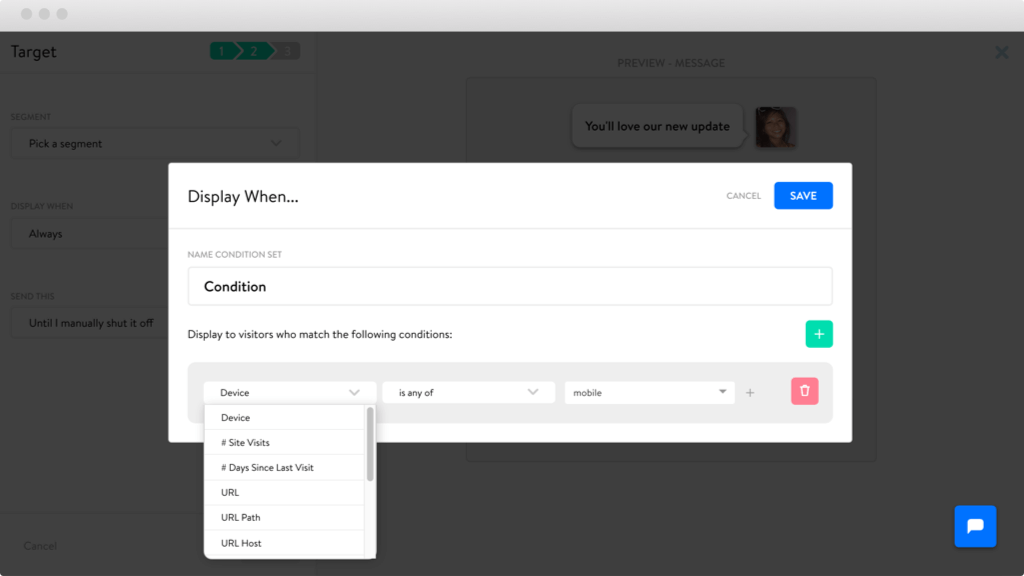 Image Source
Image Source
And the best part is that they’re beginning to provide a deeper integration with other automation tools like HubSpot.
So you can use live chat and interaction responses someone provides to kick off workflows that can run a series of other events, like sending out emails, or even text messages.
Which brings us to the next tactic.
2. Proactively Follow-Up with SMS
Email open rates continue to fall precipitously to a depressing average of 15-25%.
Contrast that with SMS open rates, which are closer to 99%!
Even more interesting is that more than a third of business people reported that they “couldn’t go 10 minutes without responding to a text”. (Which kinda makes sense when you think about your own texting behaviors.)
Part of the reason for its high success rate is because it hasn’t been completely abused (yet) like email. Only 38% of contact centers in one study reported to using SMS.
Some of the savviest organizations are now using texting in their normal onboarding or sales process to boost response rates.
For example, your typical email-based marketing automation sequence kicks off after a form is filled out. I literally just started working on one yesterday:
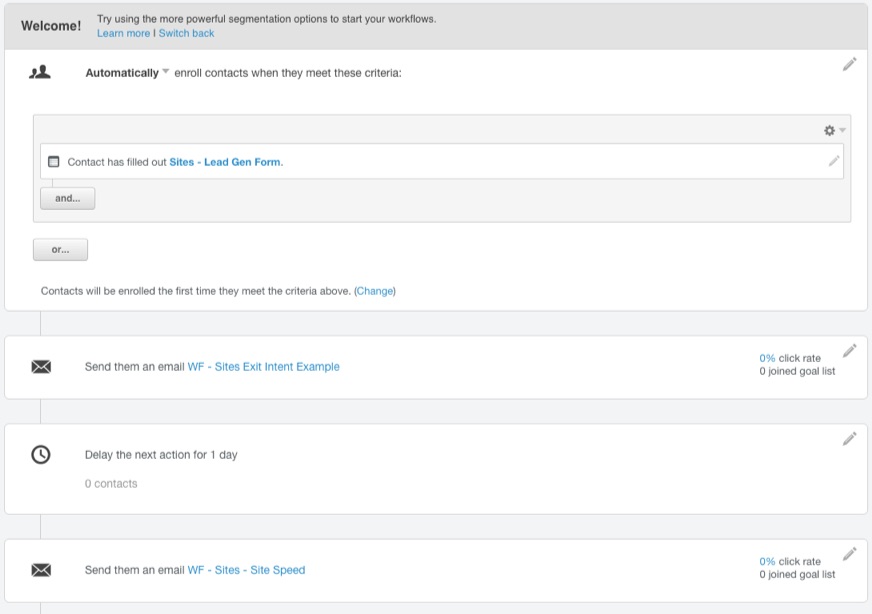
But while doing some research for a client, we came across one company that started replacing (and augmenting) some of these automated emails with instant text messages.
For example, after filling out a form on their PPC landing page your phone instantly lights up, buzzs, and says:
“$FNAME Thanks for your interest in $COMPANYNAME, we’ll be calling you soon.”
They followed up, and pre-sold the phone call (trying to increase the % of people who opt-in to accepting the first phone call).
Of course, like terribile prospects, we didn’t answer the phone call. So here’s what we received:
“We were unable to reach you. Click $PHONENUMBER to call us now.”
This is a textbook marketing automation example, where you use conditional IF/Then statements to create different response workflows based on actions they DO or DON’T take.
But they’re just substituting less declining channels (like email) with more responsive ones (like SMS and phone).
The SMS infancy was used for basic one-off messages (like limited time promotions or discounts) and your basic support or notifications.
However now, providers like TextMagic and Twilio (as we saw with live chat tools a second ago) are morphing into a ‘smarter’ option that includes the ability to run lead nurturing campaigns based on different segments of contacts (and where they might be in the overall lifecycle).
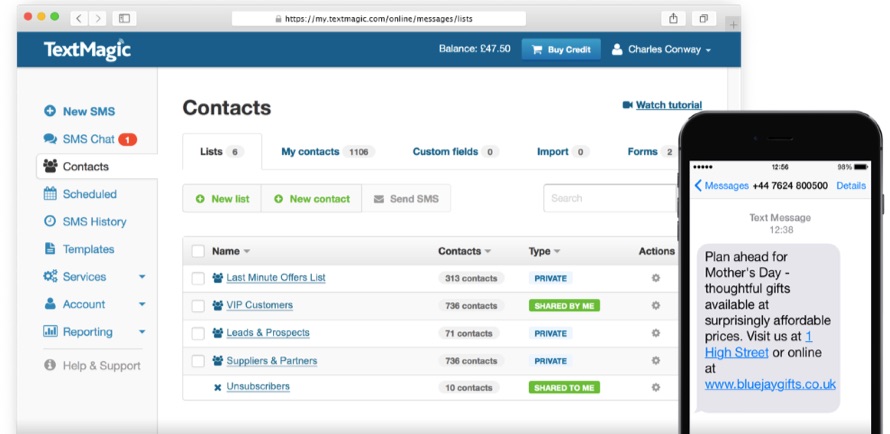 Image Source
Image Source
Hell – even Zapier can send SMS messages. And you can do A LOT with Zapier, using hacks like this to create fully-functioning marketing automation sequences with basic, inexpensive software.

3. Drive Engagement with In-App Notifications
Free trials are nice. But they’re just the start.
Because the majority of leads still won’t open their wallet and become a paying customer.
One older study showed that 70% of your free trial-er’s are going to leave. They evaluate a few options, sign up for a free trial (or two), use the product once and then leave forever.
In-app messaging can be an antidote though, allowing you to (again) trigger messages and notifications based on what users are doing (or not doing) inside your app.
In-app notifications are a way to drive engagement, getting people to interact with certain parts of your product (again and again and again) thereby increasing the chances they start paying you and lowering the chances they’re going to churn.
For example, are people using that latest feature you just released last week?
You can create a Funnel Report inside of Kissmetrics to first analyze the number of people who successfully checked out and used that new feature:
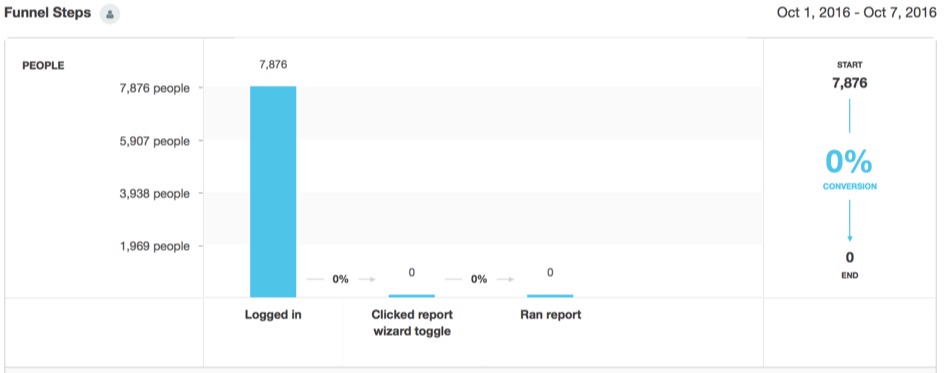
To increase that abysmal number, you can trigger notifications when new users login:
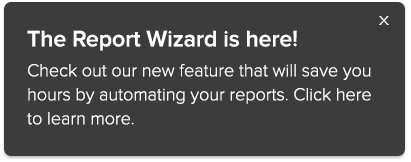
This just scratches the surface of delivery too. Beyond the basic overlay features that can slide in-and-out of the corners of a user’s screen, you can also do full screen takeovers.
You can (and should) send an email. And with someone’s email address, you can even create retargeting campaigns with a Facebook custom audience campaign or send something in the actual mail.
4. Go Old-School with Direct Mail
Walk out to your mailbox right now.
Go ahead, I’ll wait.
Open it up, and retrieve the junk inside.
Honestly – it’s probably junk. Coupons and other assorted direct mail pieces that are inexplicably still sent in this age of digital.
Apparently, there’s a reason. The USPS – like, the post office – did a study that showed 60% of direct mail recipients will ALSO visit a website being promoted on the piece.
Turns out, there’s some method to the madness as direct mail can provide an interesting way to sidestep the cluttered battleground that is your prospect’s inbox.
Even old school tactics like direct mail are getting treated to an overhaul, courtesy of players like Lob that allow you to trigger new campaigns through an API.
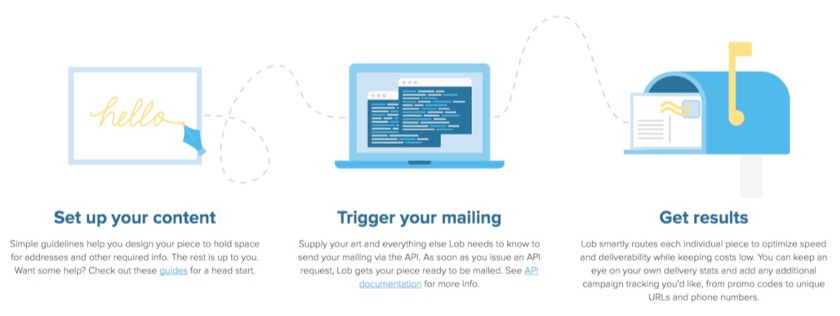 Image Source
Image Source
You supply all the content and creative ahead of time, and allow them to manage the headache of creating, coordinating and delivering each piece automagically.
You can use custom referring domains to track when new site visits occur based on offline activities. And you can use custom 800-numbers and set-up tools like CallRail (through their convenient Kissmetrics integration) to manage notoriously difficult phone calls.
Conclusion
The question isn’t, “Email, or…”. But “Email, and…”.
It’s still effective, to a point. But it needs help. The competition for attention inside an inbox continues to increase, and email service providers are becoming increasingly stingy on what they let in their pearly gates.
Consumer behavior has also evolved, so the days of converting leads and customers off a single email (or any single-channel event for that matter) are long gone.
Today, it takes a multifaceted messaging approach for our multi-device, multi-channel world.
You should still send automated emails – absolutely.
But you should also be coordinating those activities with what people are doing on your website, inside your app, and strategically reaching them on-the-go when possible too.
About the Author: Brad Smith is a founding partner at Codeless Interactive, a digital agency specializing in creating personalized customer experiences. Brad’s blog also features more marketing thoughts, opinions and the occasional insight.
Do You Really Need to Test Your Site to Improve Your Conversion Rate?
Talk to almost any online marketer and you’d think that they held a PhD in psychology. At the drop of a hat, they can tell you all about what button colors, typeface, contrast, spacing, line of sight, hero shots, etc you should use to subconsciously drive a website visitor to convert.
But do marketers really have these incredible mind powers? Do they wield the awesome power of psychology to control the rest of the world?
Testing the Testers
Recently, Chris Dayley, my head of CRO, ran a little experiment at the SearchLove conference in Chicago. Chris wanted to see how well marketers could use their understanding of psychology, marketing best practice or even gut instinct to predict which landing page design would produce the best conversion rates.
So, he presented an example A/B test from a real client of ours. There were four page variants and one of them had generated a 146% increase in leads. The room of marketers was given a link to a survey where they could examine each variant and submit their guesses as to which page had been the winner.
Take a look for yourself. Which one would you have picked as the winner?
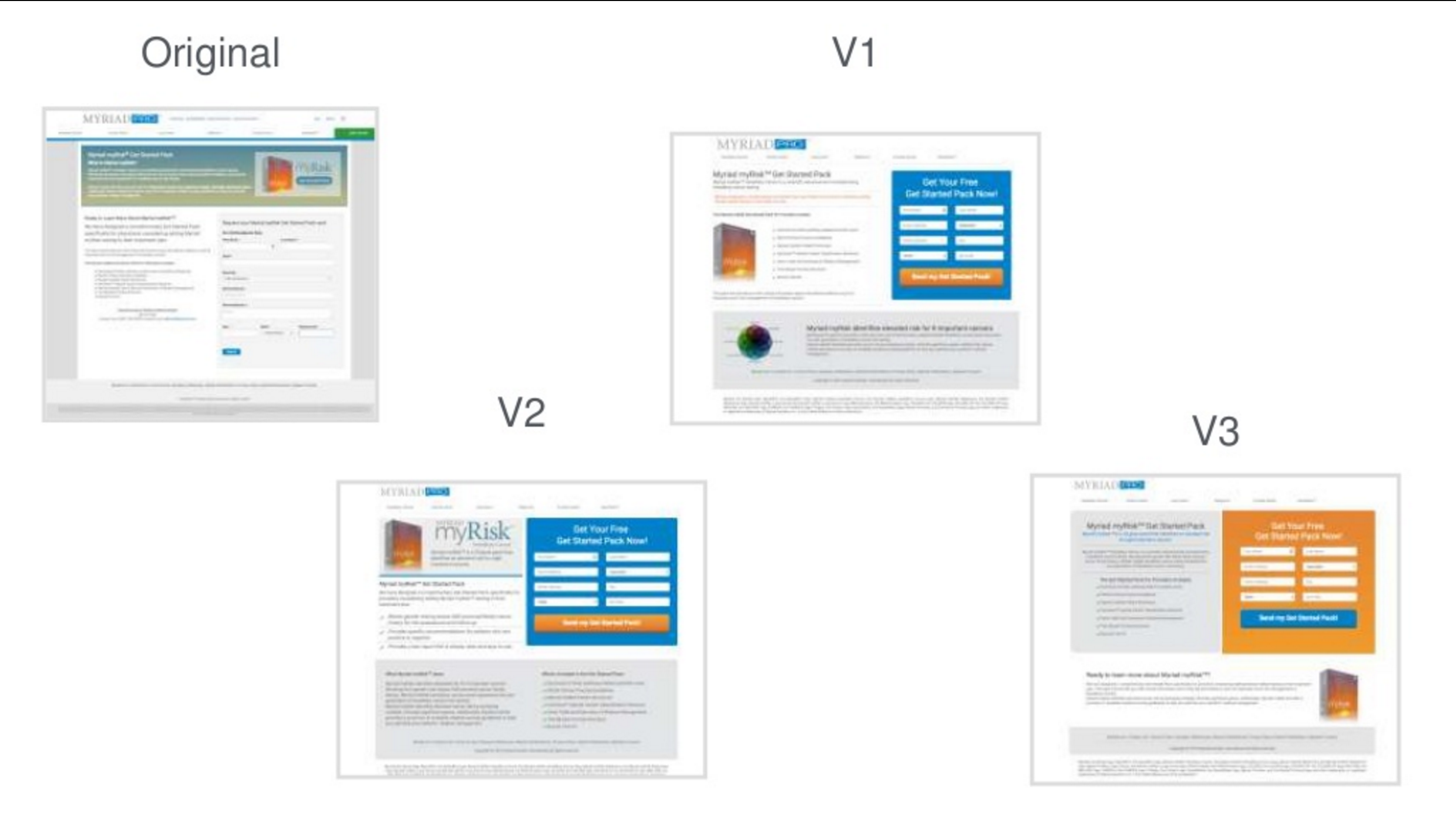
Here’s how the marketers voted:
Original: 0%
V1:32%
V2: 42%
V3: 26%
Now, only one of the variants actually produced 146% more conversions, so—if we assume that V2 actually was the winning variant—at least 58% of these marketers were wrong.
But that wasn’t the real trick of the survey.
While the marketers were guessing which page had won in Chris’s A/B test, he was actually running an A/B test on them!
Only half of the surveys showed the page variants in the order seen above. The other half saw a scrambled version with the original and V3 switched like this:

Here’s where things got a little crazy. In the second group of marketers, no one voted for the “original” page—even though that page received 26% of the votes in the first group!
Even more intriguingly, V2 received the most votes in both groups:

But here’s the thing, V2 wasn’t actually the top-performing page—V3 (the “Control” in group 2) was. That meant the actual champion only got 13% of the popular vote!
The question is, why? How did the vaunted best practices and gut instincts of so many marketers fail them? To answer that, let’s take a step back from marketing psychology and take a look at the psychology of marketers:
Newer is Better
The most obvious thing highlighted by Chris’s experiment was that all the marketers assumed that the highest performing page variant couldn’t be the original. In both groups, the variant labeled “original” didn’t receive a single vote…even when it was the actual winner.
Now, there’s a dangerous assumption at play here. Everyone who puts an A/B test together would like to believe that he or she is going to shake things up and make them better. But can you assume that newer is better?
Null Hypotheses
In scientific testing, there’s a concept called the “null hypothesis.” The null hypothesis states that whatever you change in an experiment won’t affect the results. So, if you change the button color from blue to red, your null hypothesis is that conversions won’t change at all (the effect will be “null”).
In a good study, you’re supposed to act as though the null hypothesis is true until the evidence proves this can’t be the case (kind of an “innocent until proven guilty” sort of thinking). Unfortunately, this doesn’t happen very often.
Selective Perception
Instead of assuming that a change won’t affect conversion rates, most marketers tend to focus on other hypotheses like, “if I change the button color, the conversion rate will go up.”
As a result, many marketers fall into the selective perception (only acknowledging one possibility) trap and assume that new and different will always be better. Clearly, that was the case with this group of marketers.
This is part of the reason why testing is so important. If you just assume that your new idea will perform better and make changes without testing, you could end up hurting your site performance without realizing it!
I Already Know What Works!
So in Chris’s experiment, maybe people didn’t choose the right variant because it was the “original” in one of the groups and they were biased against the null hypothesis.
But why did so many vote for V2?
It’s hard to be sure without tracking them all down and asking them, but chances are that V2 was just the closest representation of their mental image of what a successful page should look like.
Now, having a sense for what a successful page looks like isn’t a bad thing, but if it keeps you from testing, that’s when your marketing skills can get you into trouble.
Appeal to Authority
There are plenty of sources out there that will tell you how a high converting site “ought to look”, but just because something’s “best practice” doesn’t guarantee that it will work on your customers.
A blog post (even this one) or a study by an authority figure should not be the end-all-be-all for your marketing decisions. As helpful and well informed as an expert’s advice might be, it’s still no substitute for doing your own testing.
For example, the most famous example of misplaced trust in authority occurred in 1923, when world-famous zoologist Theophilus Painter incorrectly stated that the human genome had 24 pairs of chromosomes.
Now, future studies quickly revealed that humans have 23 pairs of, but Theophilus was so famous that these scientists threw out their results, assuming they must have been wrong. Textbooks were even printed with pictures of 23 chromosomes, captioned with the number 24!
This went on for over two decades before somebody finally decided that “Theophilus said so” was not a good enough reason to ignore cold hard facts.
Now, I’m not trying to rag on authority figures or studies. They can be extremely valuable sources of information and a great way to come up with testing ideas. However, if you are so focused on marketing “best practice” that you aren’t testing to see how those ideas play out on your own pages, you’re headed for trouble.
In the case of the marketers at Chris’s presentation, many of them may have voted for V2 because they felt like it met the criteria of a “best practice” page. However, “best practice” doesn’t always mean “best results.”
False Consensus Effect
Of course, just because you can’t rely on best practice doesn’t mean that you should just rely on your own know-how instead. In fact, the most dangerous authority figure that you can rely on is yourself.
The problem is, it can be easy to assume that “if the site looks good to me then it must look good to my customers,” when—in reality—customers and marketers are typically more different than alike.
After all, most of your customers have no idea what a landing page is, much less what makes a good one. A marketer might say that his or her site design caused a conversion, but I’ve never had a customer tell me “I converted because of your excellent hero shot.”
Psychologists call the tendency to assume that others think the same as we do the “false consensus effect.” The word “false” in the name ought to give you an idea of how accurate this assumption is.
For example, to many of the marketers at Chris’s speech, V2 may have seemed like the page that would get them to convert. That’s great, but our client wasn’t targeting SearchLove attendees. Their target audience was different and, as a result, converted better on a different page.
Again, this is why testing is so important. Without testing, it’s easy to assume that a page that fits best practice or your own personal preferences will be a slam-dunk with your audience. Sure, that could turn out to be the case, but it’s much more likely that your ideal page design will be just as unique and unpredictable as your audience.
I’ve Got a Feeling…
So, if we don’t know how other people think and we can’t necessarily trust what other people tell us will work best, why do so many marketers think they “know” what’s going to work?
Believe it or not, this is actually a very normal part of being a human. It is surprisingly easy to believe that you have cracked the code on how life works and that you have evidence to prove it.
For example, let’s say you have a theory—“Redheaded people have bad tempers”—originally taught to you in the second grade by a competent authority (Billy on the playground). For the rest of your life, every time you see a redhead lose it, you remember this theory and think, See? That proves it! Billy was right!
But Billy never told you the null hypothesis: “Redheaded people behave the same as everyone else.” So, when you see a levelheaded ginger you think nothing of it and soon forget about it all together. Over the years, you amass a lot of memories of angry carrot-tops, but can’t think of any calm ones, so you decide that your theory must indeed be true.
Psychologists call this behavior “confirmation bias”—the tendency to only pay attention to information that confirms our preexisting opinions.
Unfortunately, confirmation bias is probably where most “marketer’s intuition” comes from.
If you only pay attention to the data that backs up your “gut instinct,” you’ll wind up feeling right all the time. This might be great for self-esteem, but it’s not a real great approach to site design or marketing in general.
You might think you have a great “sense” for what your audience responds to, but if you haven’t tested those instincts, odds are that you’re subject to at least a little confirmation bias.
Conclusion: Stick to the Data
Can you just shortcut the whole testing process and “go with your gut?” Not really…at least, not if you want real results from your online marketing.
On the other hand, if you’re willing to put aside your biases and take a data–driven approach to site optimization, you’ll be in a good position to make a real impact for your business.
So, before you gather your marketing team in a dark room, hold hands, burn incense, and try to “channel” the customer, try putting your hands on some real data and give yourself a reality check.
Did you guess the winning page variant? How good are your marketing instincts? Do you have any examples of when biases held back the potential of a website?
About the Author: Jacob Baadsgaard is the CEO and fearless leader of Disruptive Advertising, an online marketing agency dedicated to using PPC advertising and website optimization to drive sales. His face is as big as his heart and he loves to help businesses achieve their online potential. Connect with him on LinkedIn or Twitter.

